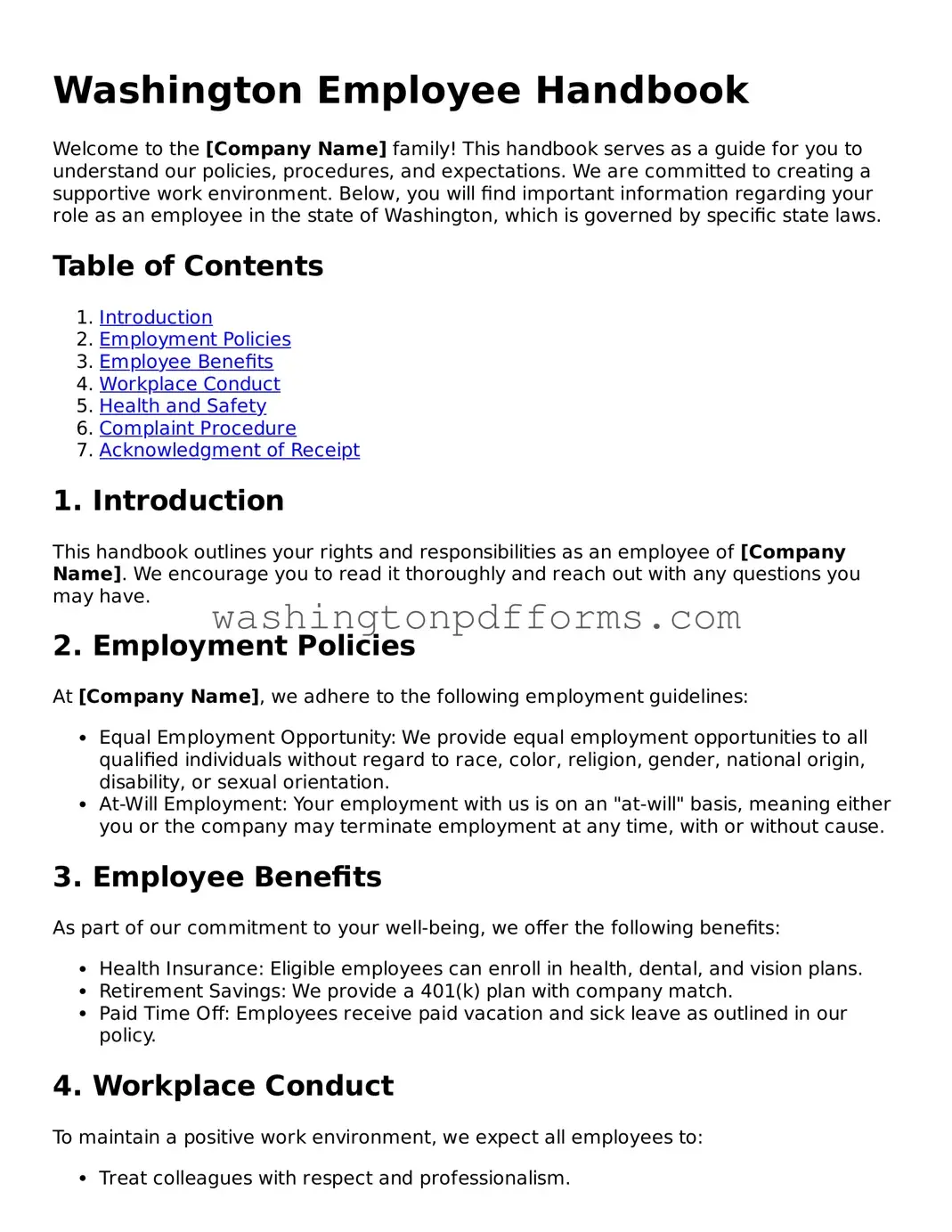Attorney-Approved Washington Employee Handbook Template
The Washington Employee Handbook form serves as a crucial document that outlines an employer's policies, procedures, and expectations for employees. This form not only helps to establish a clear understanding of workplace rules but also plays a significant role in ensuring compliance with state and federal labor laws. By providing essential information, the handbook fosters a transparent work environment and promotes positive employee relations.
Make My Employee Handbook Online
